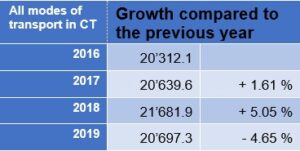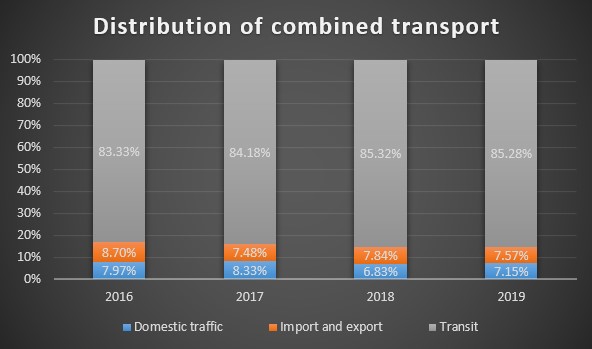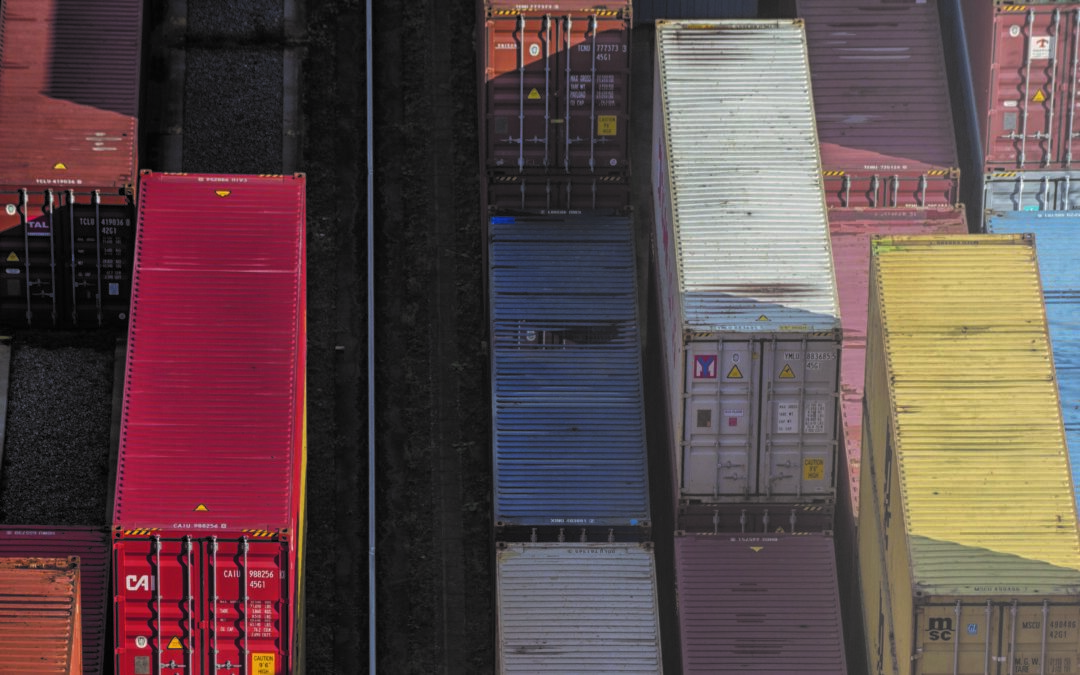The transport companies on road and rail as well as the shipping industry take their economic, ecological and social responsibility seriously and rely on cross-modal solutions. They combine the Rhine, road, rail, inland waterways, pipelines and air freight to create needs-oriented multimodal logistics solutions.
Conceptual
Combined transport in the narrower sense combines different modes of transport (road, rail, water) in one system. In this process, it is not the transported goods that are reloaded, but a transport container – in most cases a container. The majority of the distance covered (main leg) is to be covered by rail or ship, and the pre-carriage and onward carriage by road are to be as short as possible.
Multimodal transport in the broader sense also combines different modes of transport. However, the goods to be transported are reloaded when the mode of transport is changed, usually from ship and rail to truck and vice versa. Combined transport does not meet the requirements of the general cargo business in particular. This is why the rapidly growing general cargo traffic is predestined for multimodal transport, as the collection and distribution can take place more flexibly on the road than in combined transport. The latter presupposes a destination-specific load for all goods in the container. In Cargo Domicile alone, 300 freight wagons are transported in such traffic every night. Accordingly, rail freight transport plays a key role as a means of mass transport in both combined and multimodal transport. Proven subsidies (flat-rate reimbursement of the HVF, 44t limit in pre/post-carriage) should therefore be extended to all combinations of road and rail – regardless of their concrete design.
Combined transport on the rise
Combined transport has gained in importance in recent years due to its unprecedented promotion through subsidies, toll reductions and weight increases for HGVs (cf. Figure 1). In transit through Switzerland, 85.3% of the tonnages transported in 2019 were in combined transport (cf. Figure 2). In import and export traffic, 7.6% of the tonnages transported were in combined transport. In domestic transport it was 7.1% of the tonnages transported.

Figure 1: Growth of combined transport 2016 to 2019 1

Figure 2: Percentage breakdown of combined transport2
Around one third of all rail freight is carried by combined transport. In rail transport, it came to a share of transported tonnages of 34% in 2019 and 12% for inland navigation to and from Basel. The share of net tonnes transported in unaccompanied combined inland transport is 8%. The corresponding figure is much lower for road transport, which – as mentioned – is only used for the so-called pre-carriage and onward carriage (average transport distance of around 50 kilometres). Here, the CT share in 2019 was 2%, whereby this figure only refers to transports with domestic vehicles. The remaining goods are transported via conventional transport in freight wagons with transhipment of goods instead of containers.
Freight transport volume on the rise
The volume of goods transported on Swiss infrastructures will increase by 37% by 20403. The biggest driver is the growth in domestic traffic with an increase of 39%. Due to population and economic growth, division of labour, digitalisation and e‑commerce, small lot sizes in the form of courier, express and parcel services in particular will grow disproportionately. The volume of transit freight transport is also growing continuously and will increase by 38% by 2040 compared to the 2010 reference value.
Implementation of the constitutional mandate to shift traffic in transit
With the constitutional article on the protection of the Alps («Alpine protection article») adopted in 1994, the shift of freight traffic to rail in transit was enshrined in the constitution. Since then, Switzerland has invested a great deal in this shift. The construction of the Neat, to be completed in 2020 when the Ceneri base tunnel comes into operation, cost CHF 18.5 billion. The compensation for combined transport between 1994 and 2020 (until 2023) totalled CHF 1675 million4. By 2026, a further CHF 90 million will be paid to keep combined transit traffic on the railways. Today, rail has a market share of over 70% in transalpine transit freight transport from border to border through Switzerland, which is unique in Europe.
1 Cf. Swiss Federal Statistical Office, Combined goods transport, 2021
2 Cf. Federal Statistical Office, table Combined goods transport by rail
3 Cf. «Transport Outlook 2050», Federal Office for Spatial Development (ARE)
4 Cf. Federal Council Dispatch 2019 (in german)



